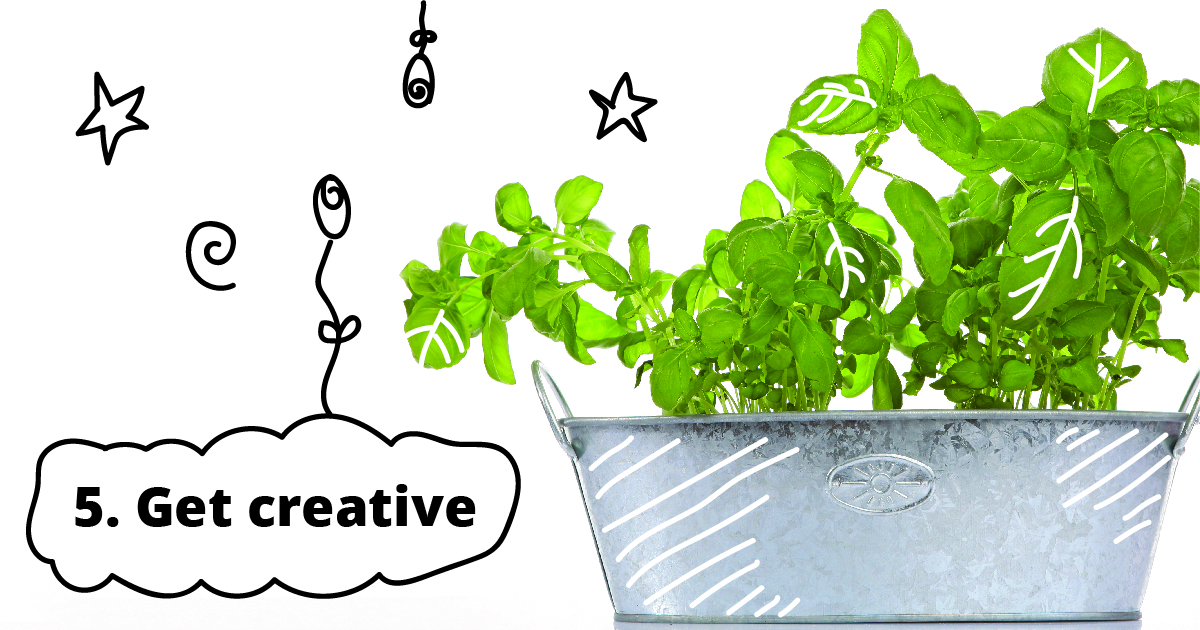You don't need a big backyard to grow a garden—in fact, you don't need any yard at all. A trend called container gardening makes raising your own fruits and vegetables possible even if you live in an apartment with no accessible gardening plot.
The concept is simple: Your plants grow in containers rather than the ground. You can keep them near a window or let them live on a balcony. And the rewards are well worth the effort.
Growing your own produce lets you control what kinds of pesticides and fertilizers interact with your food. It also encourages healthy eating, saves money and adds beauty to your living space.
Getting started with container gardening is easier than it sounds. Follow these five tips to create your own container garden:

Not every plant is suitable for container gardening, but plenty of them are. Take your pick from potatoes, chard, lettuce, peppers, cherry and bush tomatoes, eggplant, summer squash, and more. (Ask the staff at your local nursery what's a good fit.)
Many herbs will also thrive in containers and make a fresh addition to your windowsill. Seasoning with herbs is a great way to add depth to your food and cut down on salt.

You'll need to consider the amount of root space your plants need. The back of your seed packets will usually list the appropriate container depth.
The container should also allow water to drain out the bottom. Letting the water drain helps keep your plant's roots from rotting. Drill half-inch holes if you're doing it yourself.

Container plants generally need at least six hours of sunlight each day. Setting them near large windows or on a balcony should suffice. They need frequent watering too. As the weather gets hotter, you may need to give them a drink twice a day.

Herbs and vegetables should be planted in potting soil or mix. It offers good drainage, plus it's disease- and weed-free. But there isn't an infinite amount of nutrient-rich soil in the container, so plants will need an extra surge of fertilizer or compost every so often.

Aside from getting to eat the healthy produce you've grown yourself, the freedom to be creative may be the best part of container gardening. You can choose to use traditional clay and ceramic pots or think outside the box by growing your plants in less obvious containers like an old kitchen colander or tea kettle. It's a great way to both recycle and add eclectic style to your home.
Do you plan to garden outside instead? Take a look at this infographic for some important safety tips.
Reviewed 11/26/2024
Sources